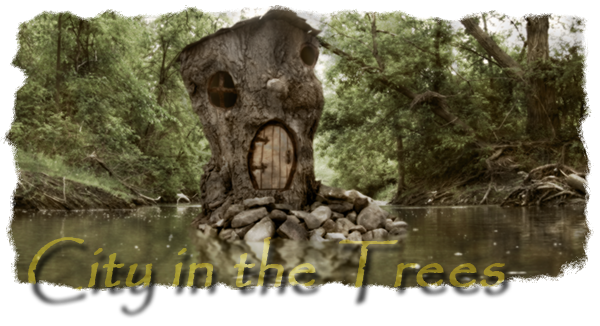Just lately I've discovered the joys of working with RAW image format in a big way. Previously, I didn't have much use for it, but Photomatix has come out with a new version that takes a RAW image, processes it itself, and creates what they call a "pseudo" HDR (high dynamic range, if you're new to this) image from the information in the RAW. (Again, if you're new to this, RAW is the generic term for any file generated by a digital camera that simply captures what the sensor received without processing it.)
I got into HDR stuff about two years back. Basically, it requires you take an AEB spread of at least three images; one underexposed, one overexposed, and one balanced. The detail in the highlights is in the underexposed, and the detail in the shadows is in the overexposed shot. Combine the three and you can an image with startling clarity. The trick is making sure the camera doesn't move during the three (or more) exposures.
One way around that is to shoot RAW. A RAW image typically has 12 to 14 bits of information per pixel, rather than just 8 for a single JPG image. There's also the added advantage that, since it's a single exposure, there's no need to worry about anything moving from shot to shot, or the camera tilting slightly (a tripod can address the latter only).
I haven't worked a lot with RAW for two reasons. Mostly, I couldn't think of a good application for it that justified the huge footprint of the file (usually twice or more the size of a JPG). But also because the vast majority of the photographic work I've done in the past two years was using my S80, and for reasons known to them alone, Canon dropped the RAW format from the PowerShot S line with that model (my S70 shoots RAW). For big treks I'd often bring my Rebel XT, and it, of course, shoots RAW (so it was the source of most of the material I've been experimenting with the past few days). But, again, I rarely shot RAW because there was little reason to... it just meant ages of processing just to see the image. But, now I'm carrying around a G9 that does shoot RAW, and Photomatix gives me a reason to, so I'm considering making RAW my default format rather than JPG.
When I started in HDR, the idea seemed to be to make something as garish and eye-catching as possible. But I can see now that the real treasure in the process is actually making something that's hyper-real, rather than something from a acid trip. Carefully done, an HDR image can look like something from real life, but at a glance can show you the details in highlights and shadows that you normally cannot see all at once. Your eyes would have to adjust to view either one, or the other. And so while the scene looks real, there's a slight, exhilarating otherworldliness to them in the, well, range of what you can see all at one time. Now to me, there's a real value in that, which is why I'm thinking of taking all my shots this way and processing the really interesting ones with Photomatix to show people the entirety of what was really there.
A few purists I've read have said you can't get a good HDR image out of a RAW. I beg to differ. I know from my own experience it doesn't work every time, but then again, neither does a three-image AEB spread either. In both cases, you seem to get the best results when there's a lot of light in the scene, or at the very least, a lot of contrast. But you can be the judge for yourself. The following are HDR images I've recently teased out of single RAW exposures.
Subscribe to:
Post Comments (Atom)


No comments:
Post a Comment